Saint-Brieuc
The Synthetic Site Folder and Site Brief are available for free.
Please register and login to access the Complete Site Folder.
- Synthetic site folder EN | FR
- Site on Google Maps
- Back to map
Data
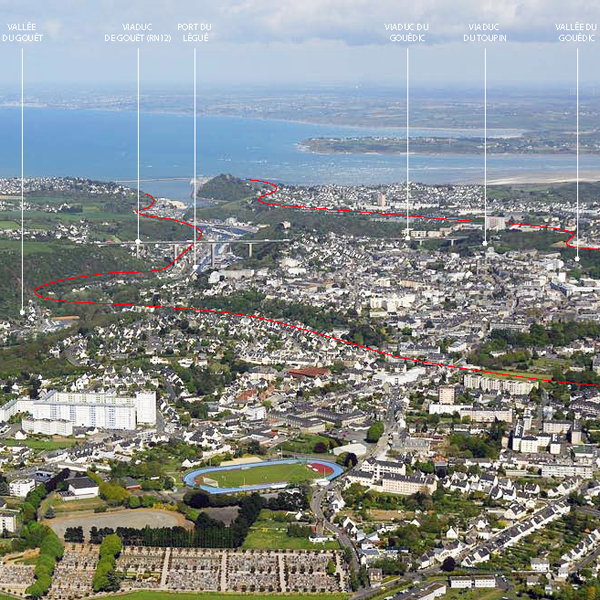
Category urban - architectural
Location Saint-Brieuc - Bretagne (22)
Population Saint-Brieuc 46,000 inhab. - Agglomération Baie d’Armor 119,000 inhab.
Strategic site 350 ha - Project sites 70 ha (city centre) + 6 ha (Légué area)
Sites proposed by Municipality of Saint-Brieuc, with support of EPFB (Établissement Public Foncier de Bretagne)
Owner(s) of the site Various
Commision after competition project and study missions on one or several mutable sites Follow-up operations can be initiated with private partners.
Team representative architect - urban planner - landscaper
More Information
How can the site contribute to the adaptable city?
In proposing a large study area, Saint-Brieuc Municipality is raising a question of geographical scale for the implementation of a strategy of urban transformation through a new relationship between land and sea in terms of landscape, urban routes and public spaces. The overall urban and landscape vision should reinforce the heart of the conurbation and propose project processes appropriate to the town’s specific historical and geographical features: the land relief and the slopes, the protection of nature, the town’s identity and relationship to the sea, the interweaving of functions and uses, the presence of large infrastructures, the organisation of mobilities. Both strategic and operational, the ideas sought should connect several scales of consideration (from the wider territory to the local) and distinct development timeframes. The aim should also be to employ methods of intervention that reflect the diversity of the environments (dense urban, natural, harbour, maritime…) and to deploy project tools that involve the population.
City strategy
Saint-Brieuc Municipality wishes to undertake a strategic reflection on the organisation and future of this territory, underpinned by the highlighting of several geographical and cultural pairings: town land/town sea, man-made town/nature town, plateau town/valley town. In order to organise its urban, economic and tourist development, the municipality is looking to Europan for an overall vision that will notably explore the continuity of its urban and natural public spaces and the quality of the routes from the town to the sea. All this raises questions about mobility and public spaces, the possibility of projects in interstitial spaces, and a reflection on combining access to and use of the valleys with the protection of their landscape and environmental quality is.
Site definition
Historically, the town of Saint-Brieuc developed around several valleys protected from urbanisation, which form a remarkable topography and highly contrasting landscapes. The difference in elevations has led to the construction of several structures that mark the urban landscape, including the Toupin viaduct (1904) and the Gouédic viaduct (1983). Around Saint-Étienne Cathedral, the historical centre, partly rebuilt after the war, occupies a plateau demarcated by the Gouédic and Gouët valleys. The study site contains several urban and landscape entities: the station and its district (a redevelopment project in preparation, with the construction of a new bridge), the town centre (issues of heritage, upgrading or the opening of public spaces), Port Légué up to the mouth of the Gouët, and finally the Gouédic and Gouët valleys, whose wooded escarpments still bring untamed nature right into the heart of the town. Within this large study area, localised projects may be designed for several potential development sites. Two project sites are proposed for the Europan teams: part of the old centre (public spaces) and an industrial brownfield site (decommissioned former gas plant) near Port Légué.
The "town-centre" project site is defined by the SNCF railway station to the south, by the Promenades park to the west, by the Prefecture park to the east and by the rue des Trois frères Le Goff to the north. It is located next to the pedestrian town-centre where most of the shops are situated. The « Légué » project site is an articulation between the extended city centre and the harbour. It is one of the major sites that strenghtens the axis city / harbour – land / sea by Légué street in the extension of the rue des trois frères le Goff.
Future of the site in relation to the site family and to Adaptability
This site belongs to the thematic type called: “how to convert physical obstacles into new connections?” This question relates to the topographical complexity of the town, which is marked by several large engineering structures. However, the site raises the problem of “object versus project” in a more global way: Saint-Brieuc Municipality is seeking a strategic and territorial vision from the Europan teams, as well as a process of implementation and operational development around several potential upgrade sites. The urban and architectural proposals for these sites should be seen as triggers for a larger and more long-term change and the physical and symbolic markers of territorial recapture and reappropriation.
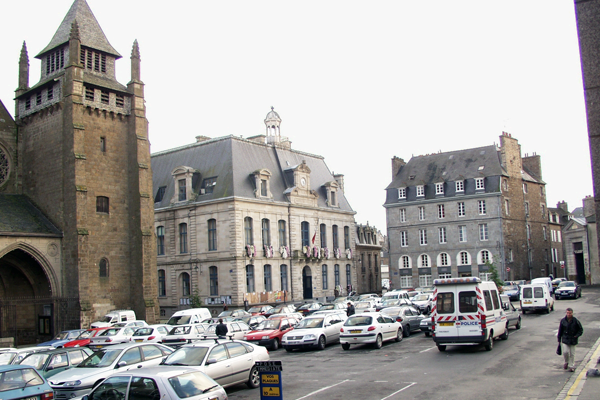
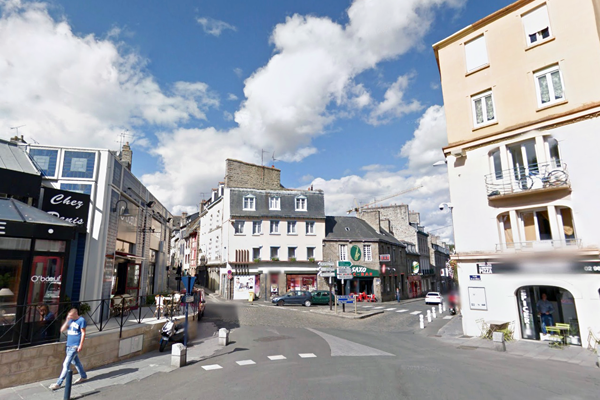
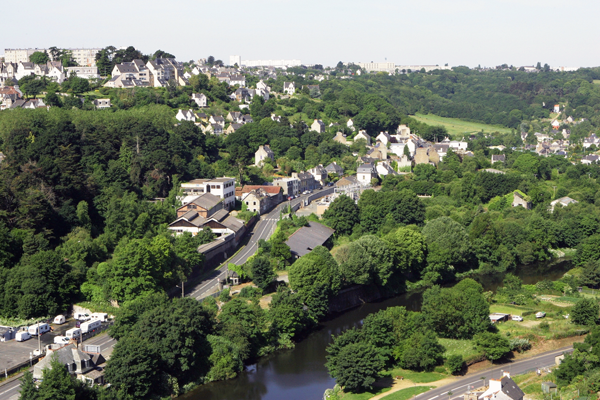
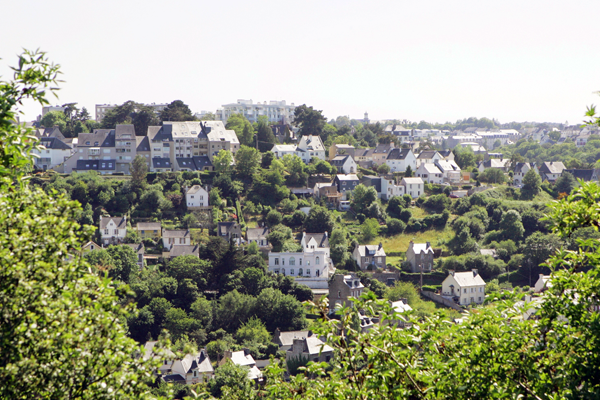
Questions on the site
We wish to know if it is possible to get the layer with topographic lines in the .DXF file, which has for now the building and the communal plot.
No. They are not the same file.
Hello, as the Légué’s site is astride Saint Brieuc and Plérin, do you have the .dwg file of the city of Plérin
We don’t have the map of Plérin in .dwg. Besides, the project site (for architectural and urbain proposition) is within Saint-Brieuc city.
After the visit of EDF’s site, I find the transformer building is within the project site. Is it a zoning mistake or is the building actually in the area and eventually removable ?
EDF site’s transformer is out of project site. It cannot be deleted or moved.
After the visit of EDF’s site, I find the area fenced and the acces prohibited. May we have a more accurate plan of the existing building, more pictures of the fallow to know the building’s condition and a map with an accurate topography to allow us to do a more suitable job ?
Requests for additional documentation will be considered during the visit and meeting with competitors. If available, additional maps will be attached to the report.
We have downloaded all the .zip files concerning Saint-Brieuc site. Is it normal that the folders FR1 and FR6 are empty?
ZIP files are generated by Europan Europe’s website when you download documents. The folder FR1 refers to the document added after the beginning of the contest and there isn’t any already. We haven’t added document to the folder FR6. (additional document added on the web site).
You will find the list of documents given at the beginning of the competition in the file SAINT-BRIEUC-FR-T-PR-fr.
Will it be a visit’s review available online ?
Record of this meeting will soon be posted.
Should we propose an answer on both sites or can we only concentrate on the "Légué"?
The municipality expects a strategic answer on the strategic site, with focuses on both project sites.
Can we have topographic lines and hydrography in .DXF files?
No.
May we have a list and/or a location map of the building plots (urbanised area –zone U) owned by Saint-Brieuc? Thanks
We don’t have land’s ownership for this site.
Is there any in .dxf or .dwg topographic file on the proposed sites? If yes, can we have access to it?
No, not at this scale.
Can we have the introductory report of the PADD in .PDF file?
Yes, it has been added to the 'New docs after launch" file.
Can we know the type and quantity of the polluting elements on the Legue’s wasteland? Can we have the accurate depollution objective engaged on the agreement with GDF SUEZ?
The agreement provides decontamination for industrial use. But you can consider that the site will be decontaminated for other use, that’s the goal.
Is it possible to find shape files of Saint-Brieux and its conurbation? Especially files of statistical data over the population and buildings' uses?
No, not under the competition.
The wasteland and Plerin are too close to not have the plans. We have to be able to represent the opposite banks and the river entrance. You told us you’d be able to get the plan in .DWG?
A map of Plerin (SAINT-BRIEUC-FR-C-M05) was added to the site file in the "New docs after launch" file.
At the city scale, may you provide data on the water network? A repertoire of wells, laundry and fountains?
No, we don’t have these documents.
May you provide a repertoire of the buildings in the city centre with at least their ground floor (business or other) empty?
No, we don’t have plans.
Concerning the inaccessible upper part of the wasteland, may you provide record documents of existing buildings with plan and pictures?
No, we don’t have plans.
For the whole wasteland, is there any document about the quality of the soil and the time needed to its natural depollution? If yes, may you provide thelm?
No, we don’t have these documents.
This site is connected to the following theme
How to transform physical obstacles into new connections? We understand “bridges” as linear connections between different contexts spanning over a barrier, which may be a river, a railway track or other physical obstacles. But we sometimes can transform the obstacle so that it allows movement in different senses and directions, becoming a connecting element rather than separating barrier. The obstacle may be inhabited, cut or criss-crossed; it can become an opportunity to increase density, change the functions on either side or bring a new perspective to a familiar context.
Specific documents
E13 FR - Lancement : Marne-La-Vallée, Moulins & Saint-Brieuc
Questions on the site
You have to be connected –and therefore registered– to be able to ask a question.
Fr. 16 May 2025
Deadline for submitting questions
Fr. 30 May 2025
Deadline for answers
Before submitting a question, make sure it does not already appear in the FAQ.
Please ask questions on sites in the Sites section.
Please ask questions on rules in the Rules section.
If your question does not receive any answer in 10 days, check the FAQ to make sure the answer does not appear under another label or email the secretariat concerned by the question (national secretariat for the sites, European secretariat for the rules).